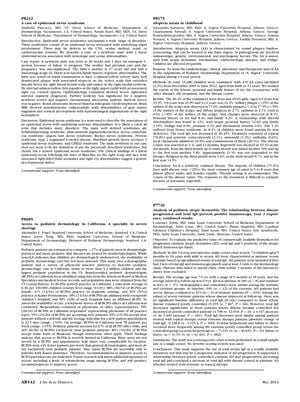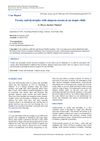Alopecia Areata in Childhood
March 2014
in “
Journal of the American Academy of Dermatology
”

TLDR Alopecia areata is relatively common in children, has a variable course, and shows different responses to treatment; thyroid testing is recommended for those affected.
The document presents a study on Alopecia areata (AA) in children, which was conducted at the Pediatric Dermatology Department of "A. Sygros" University Hospital over a 6-year period from December 2005 to June 2012. Out of 15,280 children examined, 335 cases of AA were identified (2.2%), affecting children from birth to 12 years old. The study found that 50.4% of the cases were boys and 49.6% were girls, with the most common age of onset being 5 to 8 years. The majority of children (71.6%) had mild disease, with less than 25% of the scalp affected. Nail changes were observed in 8.1% of cases, and a personal history of AA was present in 8.4%, with a family history in 4.2%. There was a notable association with thyroid abnormalities (12%), atopic history (12.6% personal, 3.15% family), vitiligo (0.9%), psoriasis (0.3%), rheumatoid arthritis (0.6%), and Down syndrome (1.2%). Anemia due to iron deficiency was found in 8.4% of children, and increased total IgE levels were observed in 20.45%. Treatments included topical and systemic corticosteroids, minoxidil, anthralin, local calcineurin inhibitors, and combinations thereof. At 3 months, 42.3% showed regrowth, with an additional 30% by 6 months, and another 5.8% by 12 months. However, 21.9% did not respond to therapy, and relapses occurred in 3.6% by 3 months, 8.7% by 6 months, and 14.5% by 12 months. The study concluded that AA is relatively common in children, with a variable disease course and response to treatment, and recommended thyroid testing for affected individuals.
